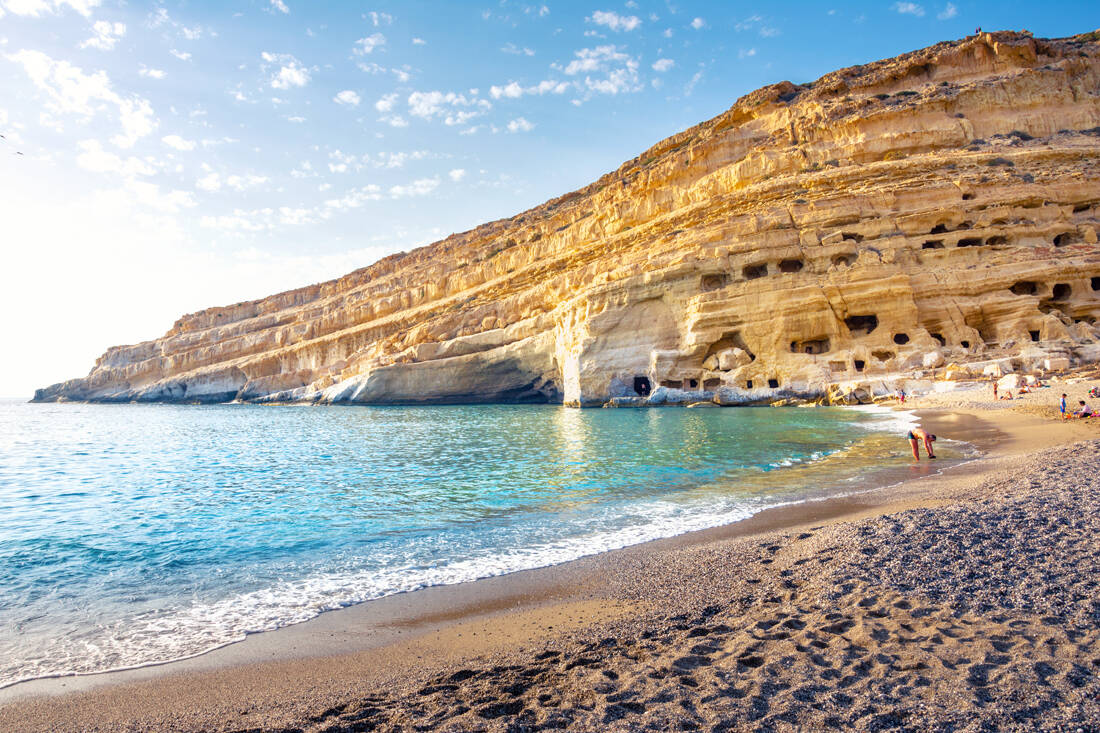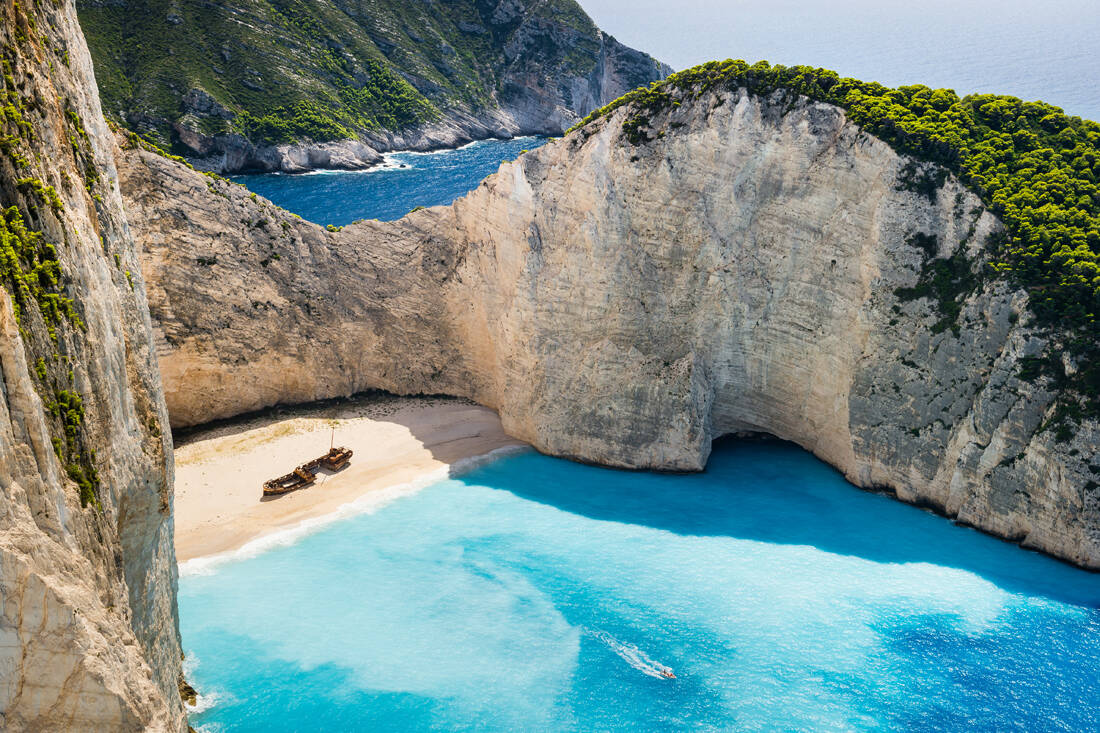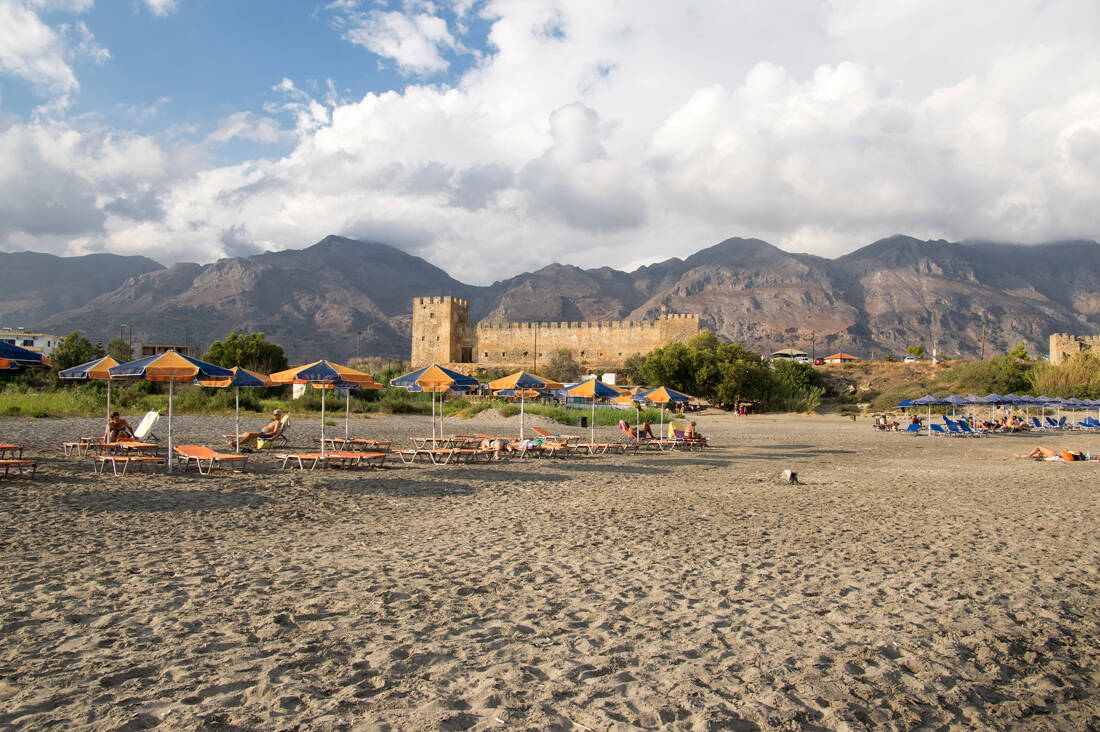Undisputed in the strong papers of our country are countless, literally, and diverse beaches which have to be proud of their turquoise waters, their golden sandy areas, the small pebbled bays and the unique experience that each one offers individually to the hundreds of visitors who choose them every year.
There are, however, some beaches, which in addition to their natural beauty, are distinguished for their special history that they have to "tell" to those who choose them for their summer longboats.

At a distance of 70 km southwest of the city of Heraklion, at the junction of the plain of Messara and the Asterousia Mountains, meets the small fishing village that lives in the "shadow" of its famous beach. The reason for the famous Matala, well known, especially for the fact that they were the paradise of hippies in the 60s and 70s.
A reference point for the area is the beautiful beach 300 meters long with the blond sandy beach which is characterized by the caves carved in the soft white porphyry, which have traveled its fame to the ends of the world.
As evidenced by the archaeological findings, these caves were inhabited for the first time during the prehistoric period, with their use changing to that of the tombs in the years of the Roman and Christian periods. Characteristic, in fact, is the old church of Panagia that protrudes through a rock, and was used as a catacomb during the Christian Persecutions. Evidence of the rich past of the area can be found in the eastern part of the village as well as in the sea, where traces of the ancient settlement can be seen.
Centuries later, however, the village's fame traveled to the ends of the earth with the hippie movement establishing these caves as a point of reference. The unruly "children of flowers" met hundreds in Matala, in order to express themselves freely and find themselves. Among them, in fact, famous artists such as Joni Mitchell (he has also composed a song for Matala), Bob Dylan, Janis Joplin and others.

At a distance of 10 km north of Pylos, in its western part Messinia and right next to the lagoon of Gialova, is the most impressive beach of Messinia, and not only, and the most famous and most photographed in the prefecture. Voidokilia in the shape of a crescent moon, thin, white as powder sand and turquoise, crystal clear waters is a natural bay with its main feature the absolute natural beauty that gathers all the visitors of the prefecture.
Apart from the rich natural beauty that makes Voidokilia look fake in the eyes of its visitors, the beach also has a rich historical interest, as its bay and beach have been declared an archeological site and a landscape of special natural beauty.
More specifically, monuments have been excavated in the area that cover a wide chronological range. At the southern end of the coast, therefore, is Paleokastro - the first castle of Pylos built by the Franks in the 13th century - where is the cave of Nestor in which traces have been found from the 4th millennium BC. on the north side of the beach there is a Mycenaean vaulted tomb, which is attributed to Nestor's son, Thrasymides (although it has not been scientifically confirmed).
Access to Voidokilia can be done by car, but from two different routes. The first passes through the small settlement of Gialova and a narrow street in the dunes of the beach. The second has as reference point Divari beach, where the route takes place parallel to the sea. From one point onwards the access is only on foot either through an ascent to Paleokastro of Pylos, or walking on the shore of the lagoon of Gialova. Both options have their own natural beauty.

There is no traveler who has not seen, even through photos, one of the most famous beaches in our country. Its most photographed and award-winning beach Zakynthos, maybe the whole country, is located in the northwestern part of the island, in the wider area of Volima, at a distance of 22 km from the city center of Zakynthos.
Have you ever wondered why the beach is so named and what history is hidden behind its spectacular spectacle?
For the history it is worth mentioning that the "godfather" of the beach was the shipwreck itself, as its previous name was "Agios Georgios", a beach quite inaccessible, as it is today, but also unknown to the general public. Its name, therefore, is due to the shipwreck of the ship "Panagiotis" in 1983. The merchant ship, which was carrying smuggled cigarettes, was sailing off the Ionian Sea when it was pursued by the authorities, as it was considered suspected of smuggling. Unable to escape from them and due to the bad weather conditions the master was forced to run aground on the white sand of the beach, where it is found to this day.
The impressive landscape of Navagio beach is enchanting with the rusty trunk of the ship being "lying" on the golden beach, which is surrounded by the turquoise waters of the Ionian Sea, while on the back of the bay rise imposing, steep cliffs.
If you want to enjoy the magnificent image of the Shipwreck from above, you will reach it by road to the monastery of Agios Georgios of Gremna. From the iron platform located just below the monastery you will have the opportunity to take panoramic photos. The beach is accessed by sea by boat from the port of Agios Nikolaos Volimon, as well as by tourist boat from the port of Zakynthos and the beach of Laganas.

A sandy beach and an imposing Venetian fortress on the south coast of the prefecture of Chania, on the border almost with the prefecture of Rethymno, at a distance of 75 km from Chania and 15 km from Chora Sfakion, every year from late May to early June star in the stories and the stories of the locals, and especially the older ones.
The reason for the legendary Frangokastelo and the homonymous coast right in front of it, where important events of history have taken place, both during the Venetian rule and during the Ottoman Empire. One of them is the fact that is directly connected with the myth of the Drosoulites, who "wake up" every year during the last days of May and the first days of June.
During the Turkish occupation, therefore, Hatzi Michalis Dalianis with a group of warriors, a total of 600 men, resisted the besiegers defending the castle for more than a week, fighting against 8.000 Turks. In the end, however, 335 of them lost their lives, including Dalianis.
According to tradition, the lifeless bodies of the warriors were buried, which were covered by the sand that brought strong wind that blew in the area from the nearby beach Orthi Ammos. Thus, every year in late spring, these warriors "wake up" and roam one after the other for about 10 minutes at sunrise. The shadows that walk towards it castle and lost in the sea are visible only with apnea and increased humidity in the atmosphere, from where they got their name "Drosoulites".
Although many claim to have seen the shadows of warriors, there is a logical explanation for this as it is a reflection due to the refraction of the sun's rays in the cloud of morning dew. Beyond the myth, Frangokastelo stands haughtily over time, reminiscent of the glorious history of Crete. Today, the visitor can combine his visit to it with refreshing longboats on the homonymous sandy beach with shallow waters or in Orthi Ammos, shortly after that.
